The Andean wedding in Peru is a celebration full of joy and meaning, where nature and spirituality are intertwined. The ceremony preserves its ancestral heritage in a modern world and finds inspiration in this magical connection with the land and enduring traditions.
With ancient rituals, offerings to Pachamama (Mother Earth), traditional music, and profound symbolism, this matrimonial union transcends conventional love. Therefore, in this blog, you will discover the sacred charm of Andean marriage in the majestic Andes of Cusco while immersing yourself in a spiritual and cultural experience that unites two souls and entire communities.
In the heart of the Andes, in Cusco, Peru, there is a scene of breathtaking beauty where couples can seal their love uniquely and transcendently. Andean wedding in Peru hold a strong spiritual value, where the bride and groom thank Pachamama and seek blessings from the Apus. These great protective spirits originate in the mountains and are considered the closest living ancestors of the Incas.
What is the Andean Wedding Ceremony?
Andean marriage is a form of marital union practiced in indigenous communities of the Andes. Imagine walking along ancestral trails surrounded by imposing snow-covered mountains while the wind softly carries mystical whispers. The Andean wedding ceremony is in a sacred location meticulously chosen for its energy and spiritual significance.
This type of wedding in Peru is characterized by its profound spiritual essence and intimate connection with Mother Nature and the Andean deities. The couple becomes a reflection of the sun and the moon, uniting their hearts and spirits for eternity. Guided by the Apus (the protective spirits of the mountains), the couple is united with love and wisdom, purified with medicinal plants, and blessed with the perfect duality they represent.
In Cusco, the heart of the Andes, couples can seal their love in a truly unique natural setting. Cusco is surrounded by sacred mountains that have been worshiped since ancient times, creating a mystical and powerful environment. This majestic landscape, combined with the living traditions of Andean culture, turns every ceremony into a deeply symbolic and unforgettable experience.
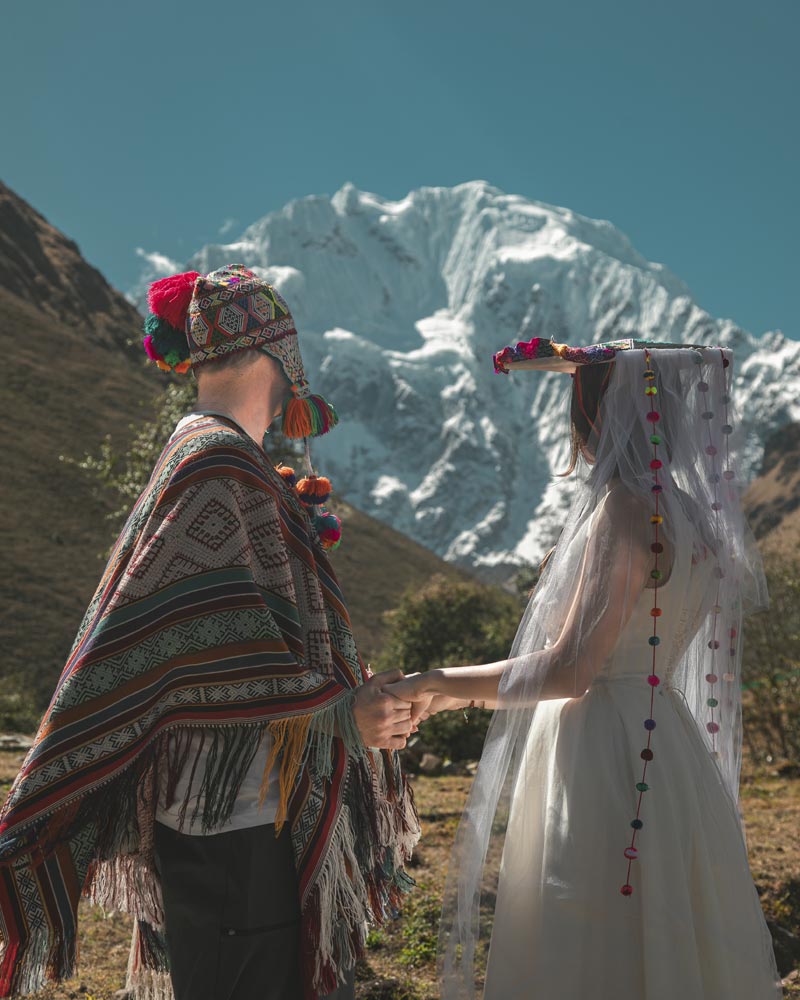
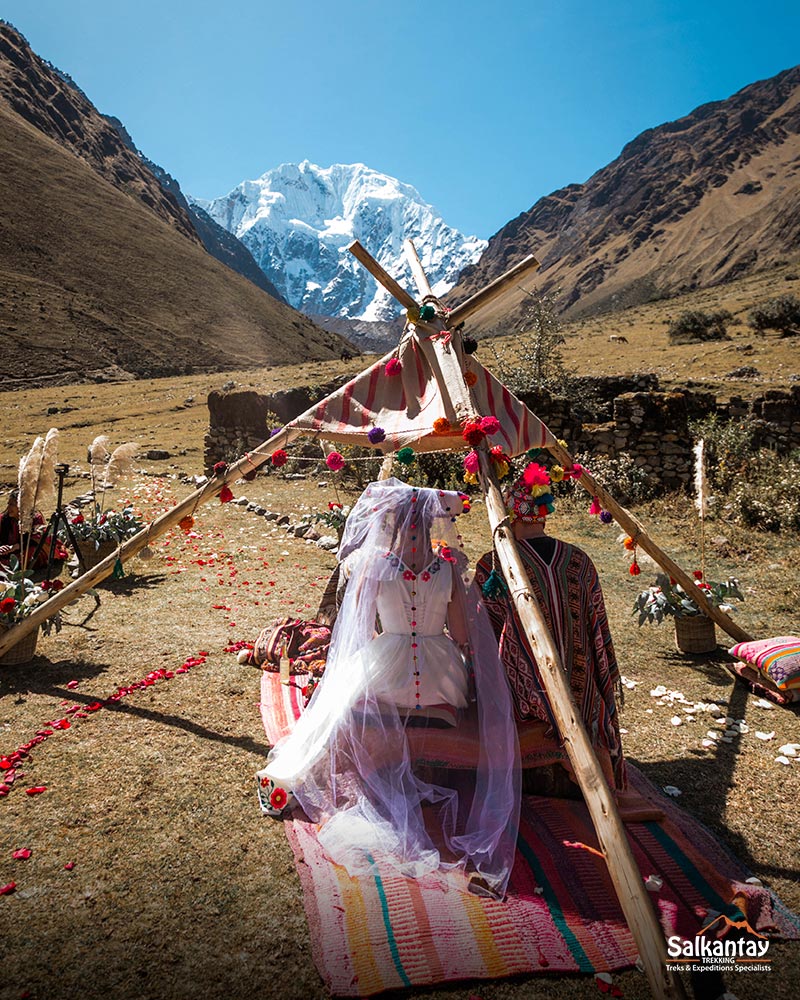
Inca wedding ceremony
Discover all the rituals that bring this special moment to life! Every gesture, offering, and word holds deep meaning, connecting love with the mystical world of Peru.
What is the Inca marriage like?
In the Andean wedding or Inca marriage in Cusco, various rituals and ceremonies are performed, which may include the participation of shamans or spiritual authorities, as well as offerings to Pachamama (Mother Earth) and other Andean gods such as the Apus, the sacred mountain spirits.
Traditions and rituals
The traditions and rituals of the Andean wedding in Cusco reflect a deep connection with nature and the community. This ceremony not only seals the union of a couple but also represents a commitment to Pachamama, the guardian spirits of the mountains, and the energy of the universe. Every detail of the ritual holds symbolic meaning that honors the Andean worldview and strengthens the bonds of reciprocity, respect, and harmony.
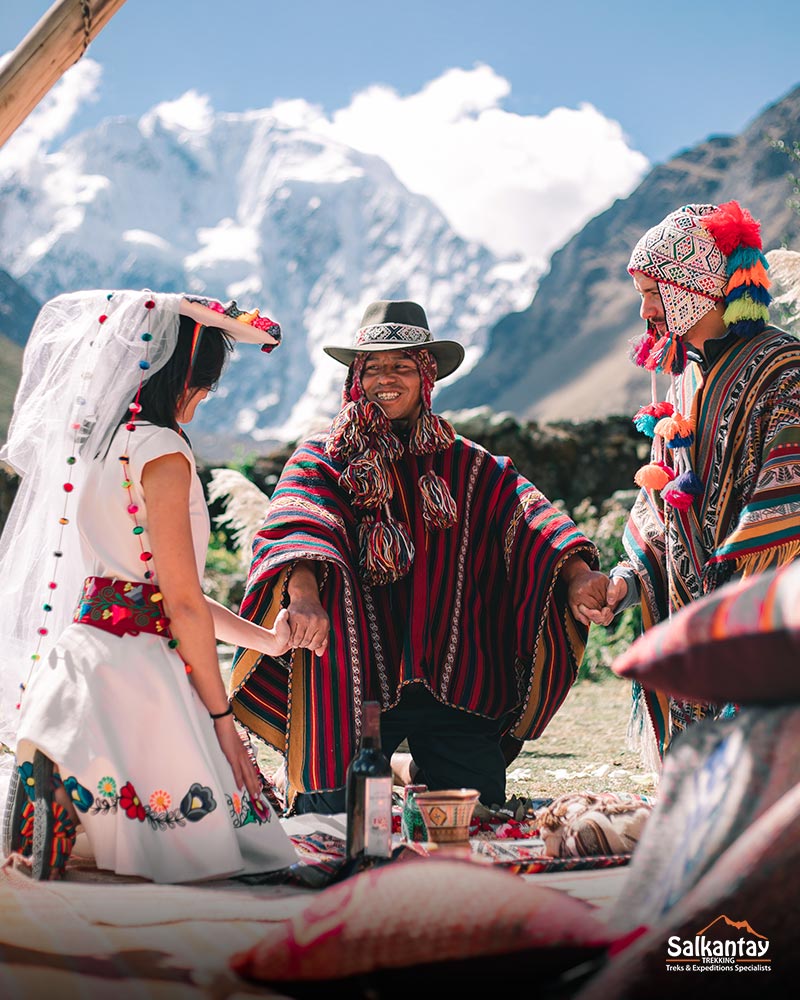
Engagement Ceremony
Especially along the majestic Salkantay route, many couples choose to experience an Andean engagement ceremony, surrounded by a landscape filled with natural energy and spirituality.
- Initial toast: The couple shares chicha de jora (an ancestral fermented corn drink) or local wine in traditional vessels called keros. This gesture represents mutual trust and the desire to walk together in harmony.
- Offering to Pachamama, Mother Earth: Offerings such as coca leaves, flowers, seeds, and sweets are placed on an Andean blanket. These are given to the earth as a symbol of gratitude and to ask for blessings for the couple.
- Symbolic union: The shaman or spiritual guide ties the couple’s hands with a woven belt (chumpi), sealing their bond. Accompanied by prayers in Quechua, they invoke the protection of the Apus (mountain spirits) and the elements of nature.
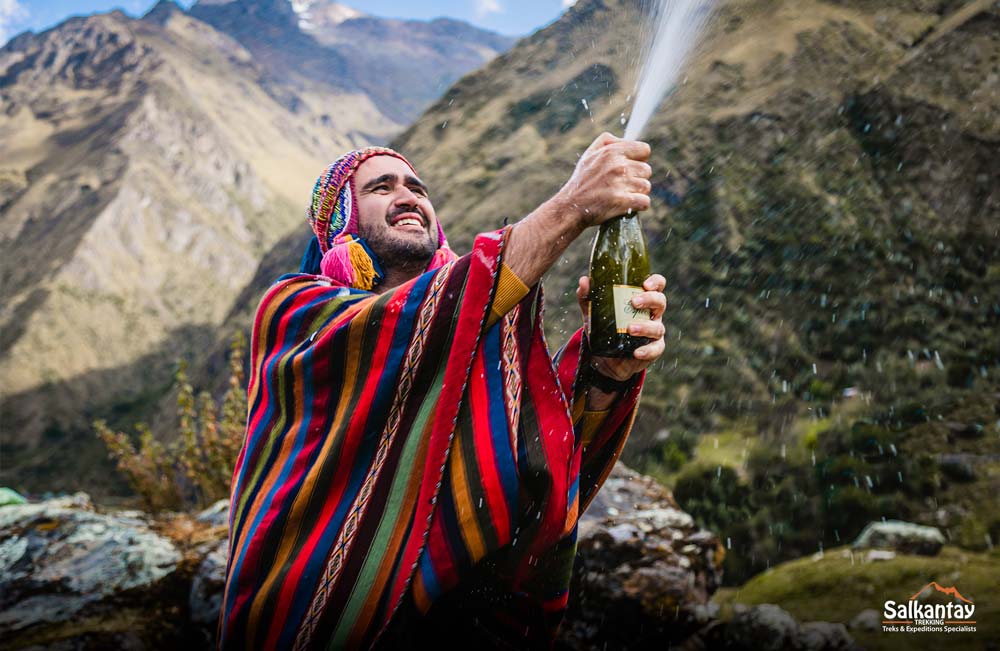

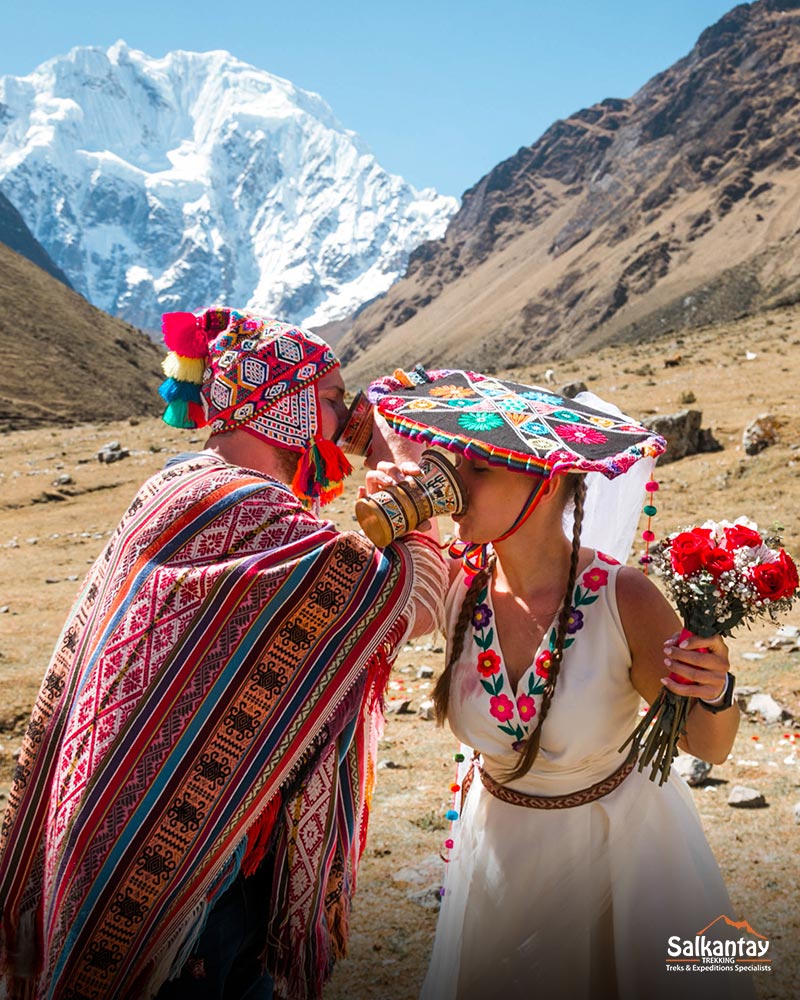
Blessings and prayers
During the ceremony, the shaman or spiritual authority guides deeply symbolic moments through blessings and prayers spoken in Quechua, the sacred language of the Incas. Their words are powerful invocations through which they ask for divine protection, abundance, lasting love, and balance for the couple. These are solemn and emotional moments that mark the beginning of their union with the spiritual support of nature and the ancestors.
Traditional music and dance
During the Andean wedding, traditional music plays an essential role, filled with symbolism and emotion. From the beginning of the ceremony, it concludes with soft Andean melodies played on traditional instruments such as quenas or zampoñas, creating an intimate, sacred, and deeply emotional moment in the heart of the Andes. The songs often feature Quechua lyrics that speak of love, union, mutual respect, and connection with nature.
Community Festivity
The Andean marriage is a celebration that involves the whole community. It is a moment of reunion, joy, and solidarity, where family and friends come together to celebrate and share traditional foods. In celebrations with family and friends, traditional dances from the region—such as huayno or tinkuy—are usually performed, with both the couple and the guests joyfully participating. The colorful outfits, vibrant steps, and lively rhythm of the music turn the event into a true community festivity.
Clothing
The attire of Andean weddings incorporates traditional elements such as Andean textiles, embroidery, and colorful patterns that reflect the region’s rich cultural heritage.
For the bride:
- Skirt (Pollera): A long, voluminous dress made of colorful fabrics and adorned with embroidery and lace. The pollera can vary in design and style depending on the region. In Cusco, the bride may wear a traditional costume typical of the area, or a modern white dress with Andean embroidery.
- Mantle or Lliclla: A type of shawl or blanket worn over the shoulders. It is also made of colorful fabrics and is usually decorated with embroidery.
- Traditional Hat or Montera: Some brides wear a traditional hat or montera to complete the outfit, a highly valued item commonly used in Andean communities.
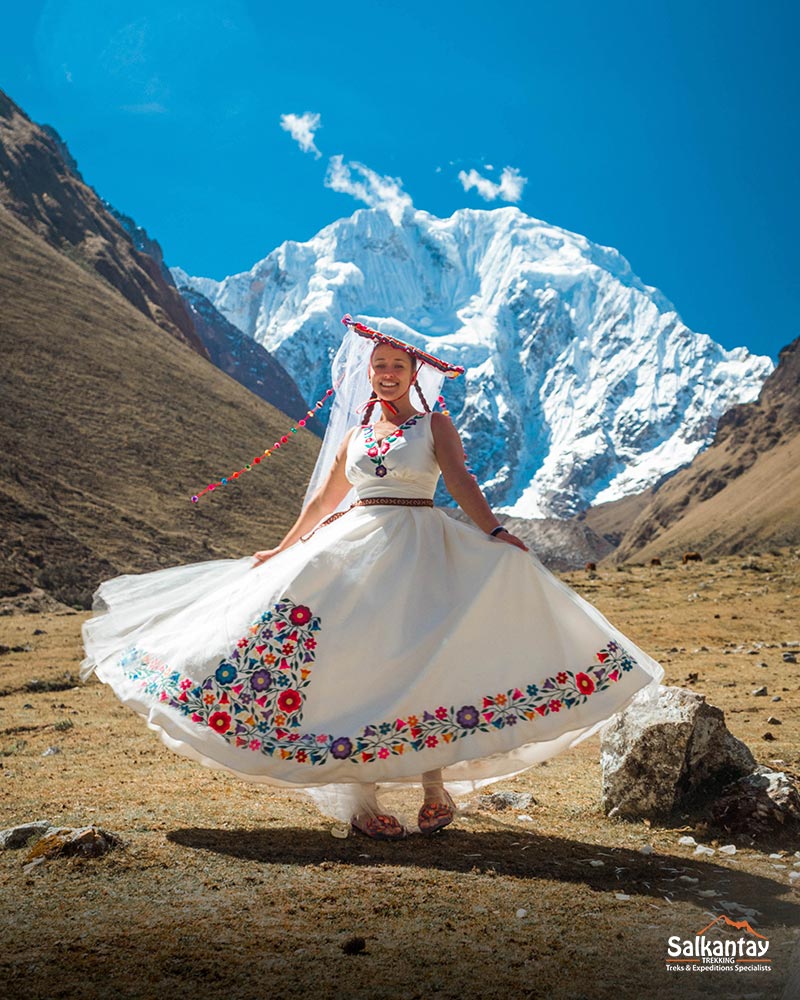
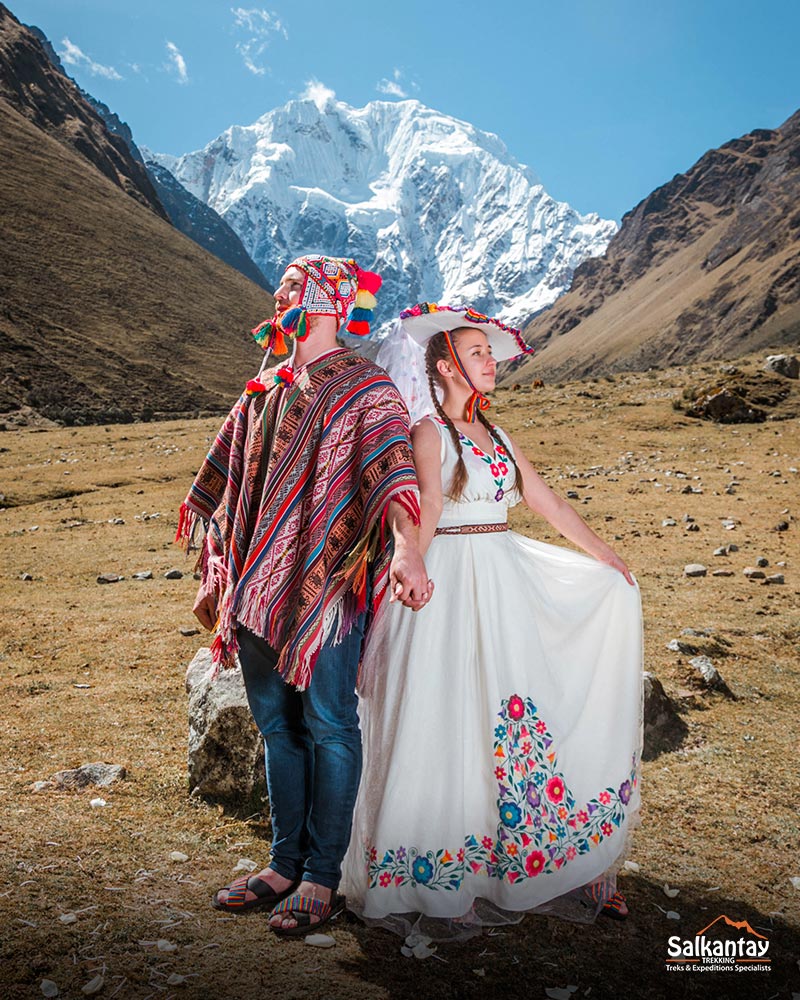
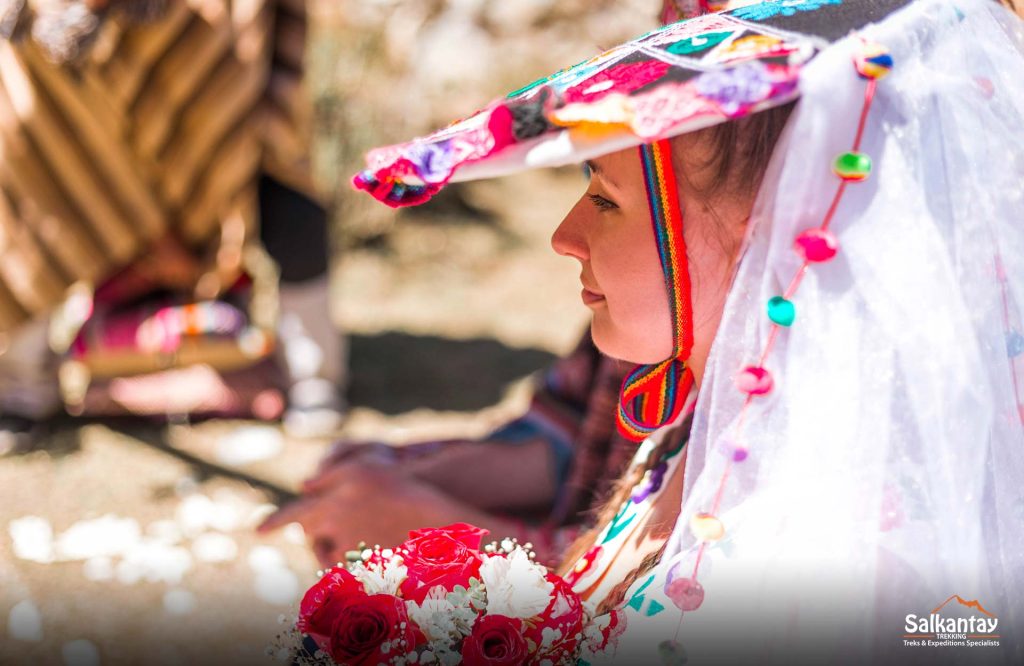
For the groom:
- Traditional attire: The groom wears flannel pants, made from thick wool, and on his feet he wears ojotas. These open sandals are made of leather or recycled tires and are common footwear in many rural communities.
- Andean poncho: This ancestral garment is worn throughout the Andean region. Made from sheep or alpaca wool, it serves as a warm outer layer. Its colors and designs convey identity, origin, and status within the community.
- Chullo: This earflap hat is a classic of the Andean highlands. It protects against the cold and often features symbolic designs. In ceremonial contexts, it can also carry spiritual or representational meaning.
Nowadays, ceremonies are somewhat more modern. In Andean weddings in Peru, you’ll notice a mix of traditional clothing elements with contemporary touches, offering a greater variety of outfits.
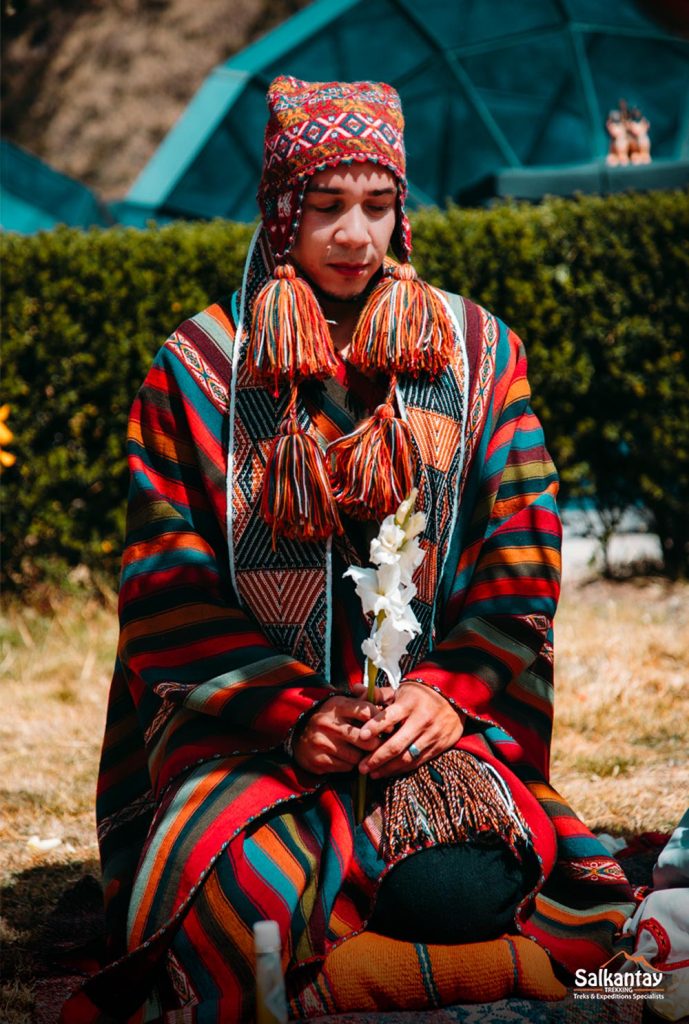
Symbolism
In Peru, the most recognized symbol of the Andean wedding is the exchange of the chumpi (in Quechua), a woven and durable wool belt of commitment.
The meaning of this act is linked to the union of two people and the merging of their lives into a single path, symbolizing the mutual commitment of the spouses.
To strengthen this union, a special toast may also be made with a traditional drink, offered to the sacred mountain as a request for protection for the couple’s new life together.
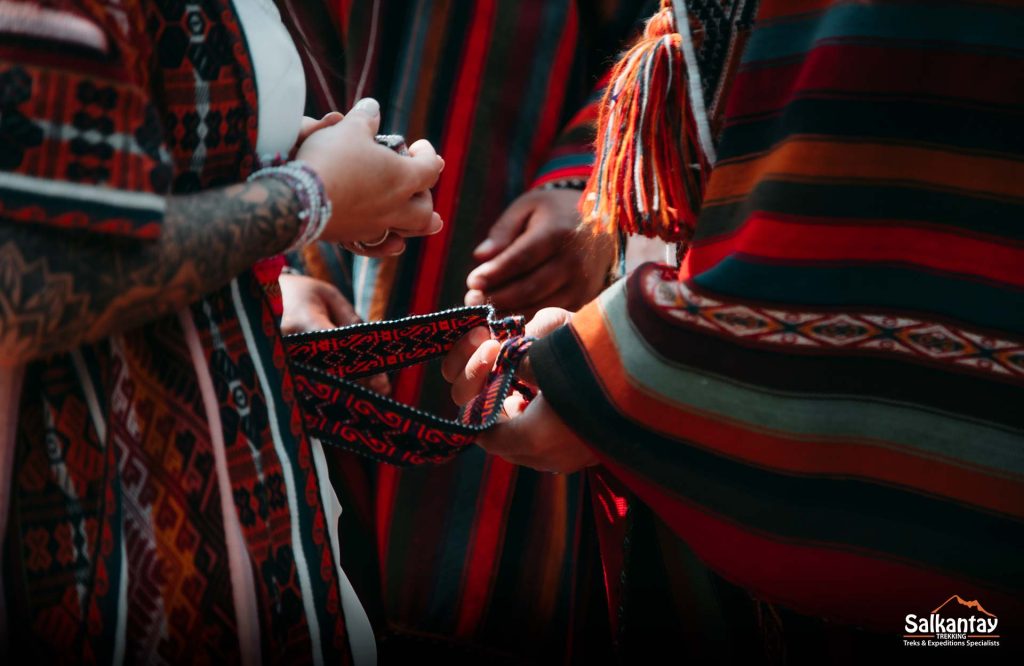
Connection with Nature
The connection with nature is a fundamental part of Andean marriage, as many Andean communities have a deep spiritual and cultural relationship with their natural surroundings.
Offerings to Pachamama:
Pachamama, or “Mother Earth,” is an ancestral deity worshipped in Andean culture. During the marriage ceremony, offerings are made to Pachamama, such as coca leaves, flowers, seeds, and other natural elements. These offerings symbolize gratitude and connection to Mother Earth and nature.
Outdoor Ceremony:
Andean weddings in Cusco, Peru, are often held in natural spaces such as the Sacred Valley, Salkantay Mountain, Ausangate Mountain, and lakes, immersing the couple in the beauty and energy of nature during the ceremony.
Natural Elements:
During the ceremony, the shaman uses various natural elements such as flowers, leaves, branches, and stones, which symbolize vitality, balance, and connection with nature. These elements may also be present in the decorations, floral arrangements, and even in the couple’s attire, reinforcing the spiritual bond with Pachamama.
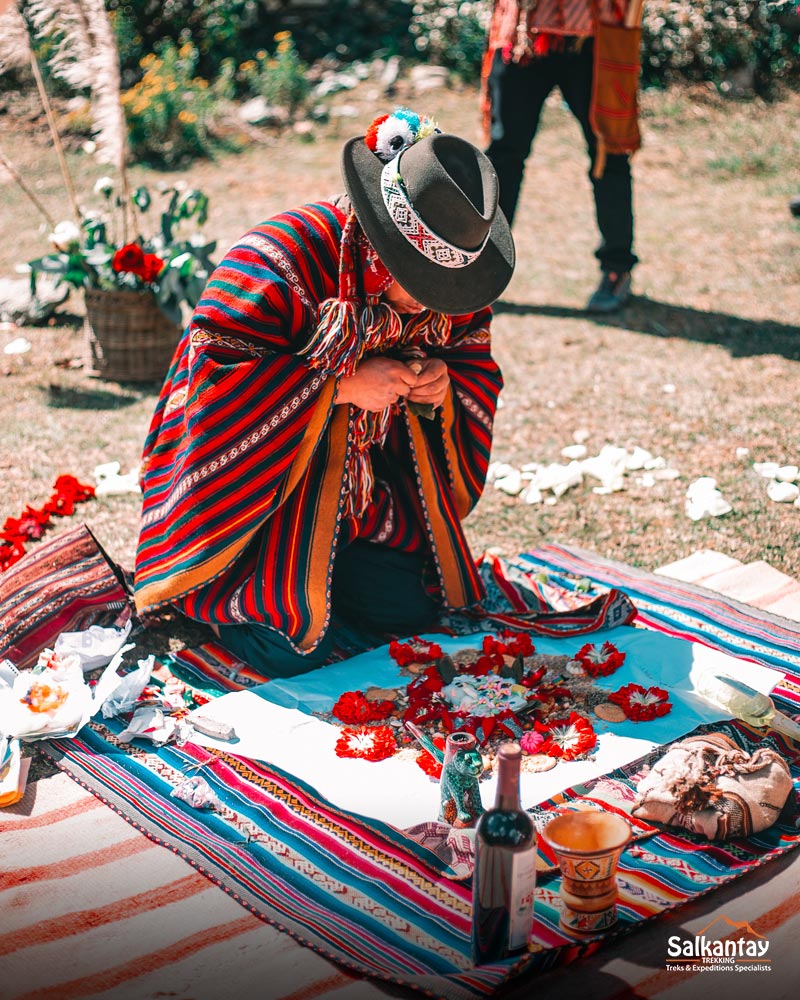
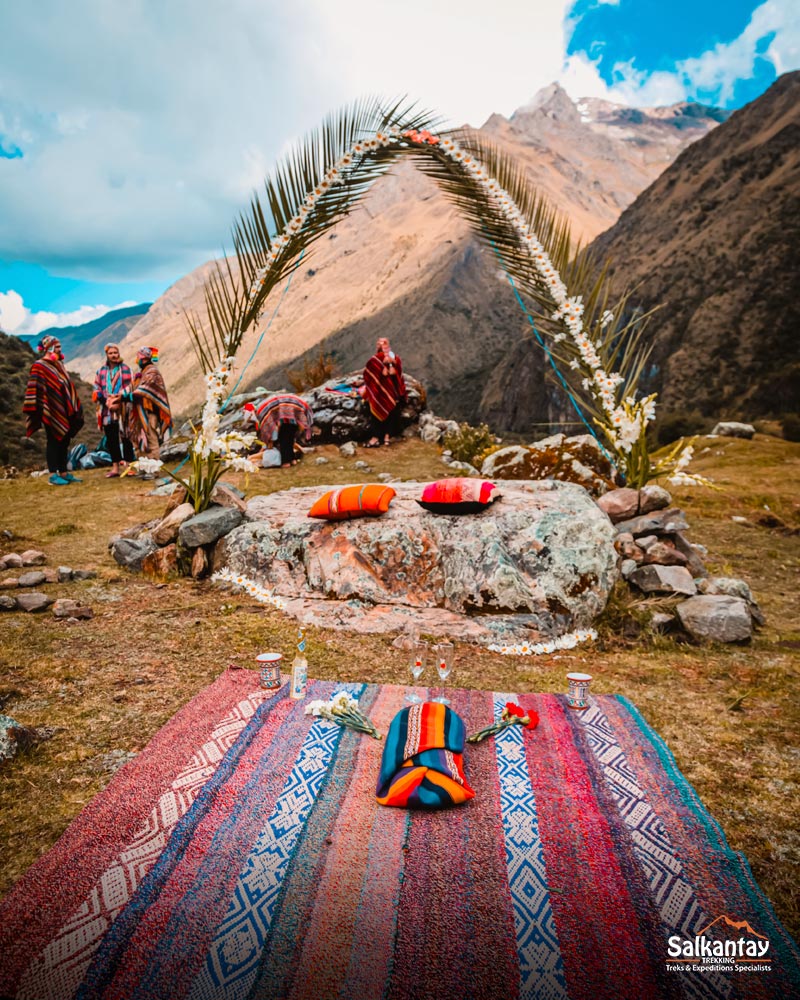
The Salkantay Trek to Machu Picchu
At Salkantay Trekking, we offer our Salkantay Trek Honeymoon to couples who love to connect with nature and wish to unite in a traditional ceremony where the sacred mountains act as silent witnesses.
The Salkantay trek is considered among the top 25 hikes in the world by the prestigious National Geographic Adventure Travel magazine, offering you the opportunity to experience a beautiful and authentic honeymoon amidst dreamlike landscapes.
Imagine the excitement of renewing your wedding vows with the love of your life in the most incredible setting you can imagine: a stage where the majesty of the mountains blends with the ancestral energy of the Andes. You’ll have the chance to spend incredible romantic nights with your partner in the most exclusive campsites, immersing yourselves in the intimacy and beauty of nature until you reach Machu Picchu.
To learn more about our Salkantay Honeymoon Trek, don’t hesitate to visit the Salkantay Trekking website. There you’ll find details about available dates, included services, and how to make your honeymoon a truly unforgettable experience.
Without a doubt, the ancestral Andean wedding ceremony in Peru will transport you to a spiritual world, where you will connect with nature and experience eternal love in its purest form.
Are you ready to live this unique and transformative experience in the heart of Cusco?
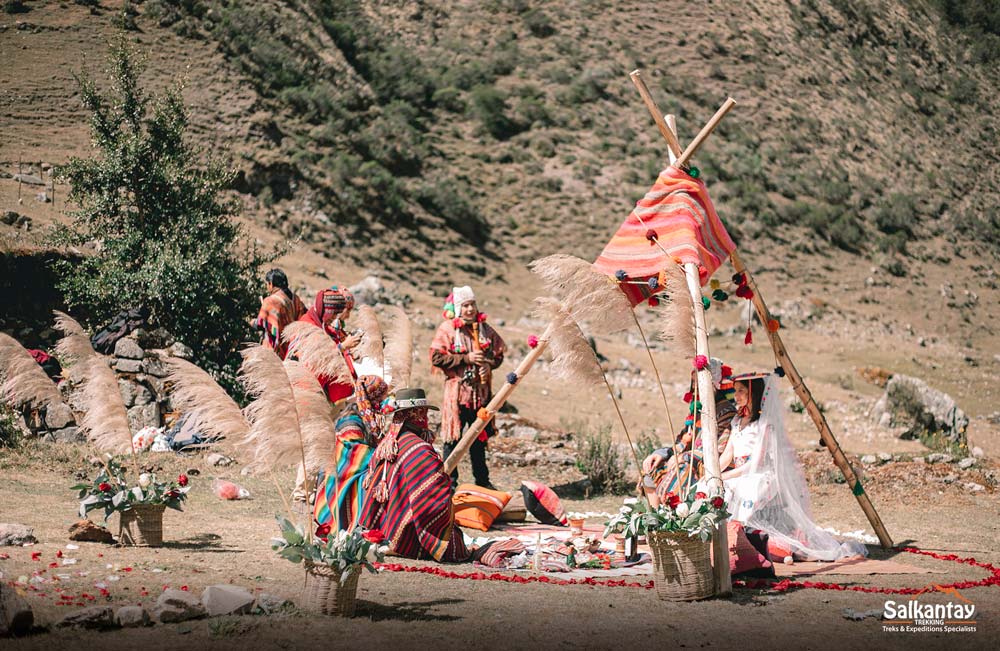



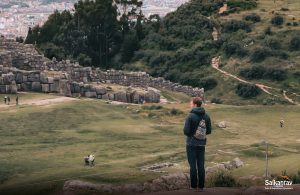
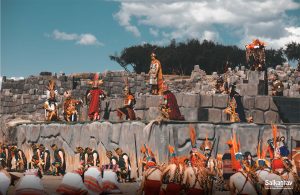
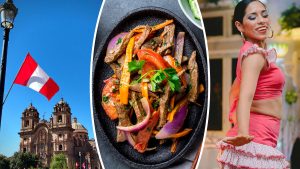
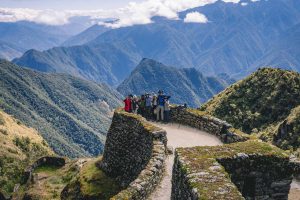

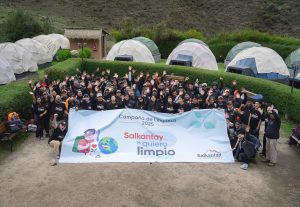

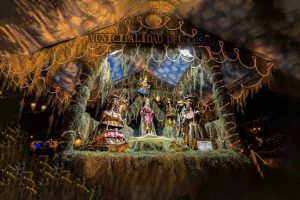
Leave A Reply